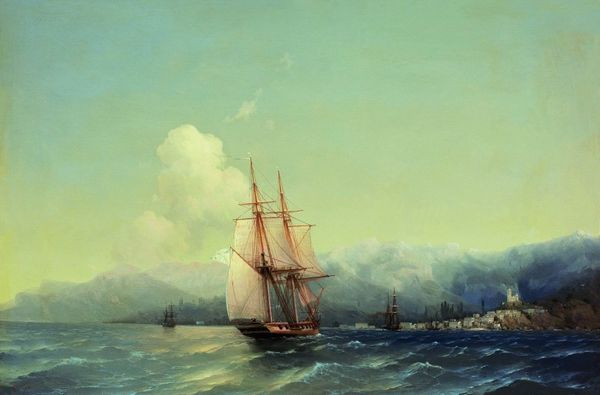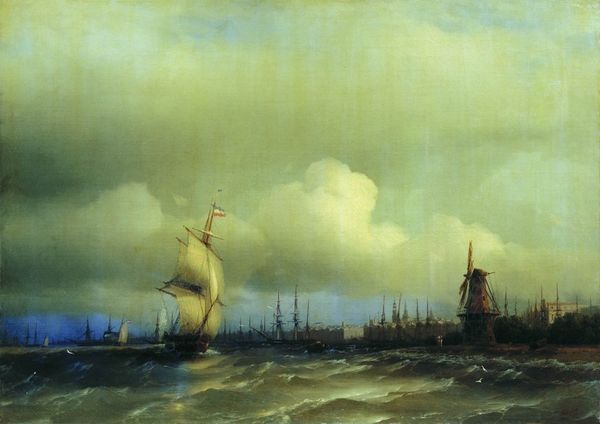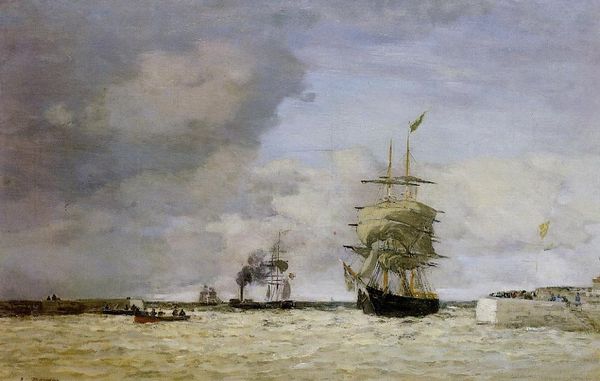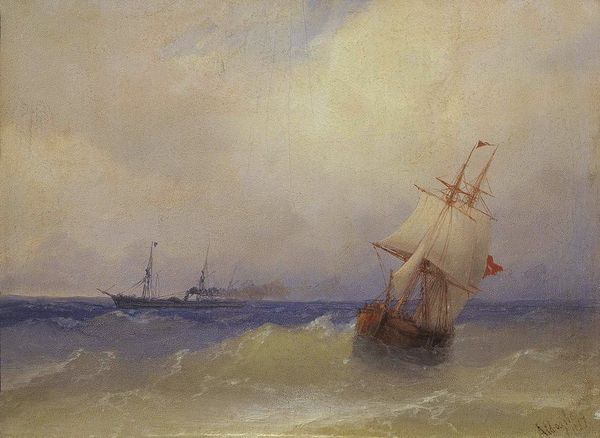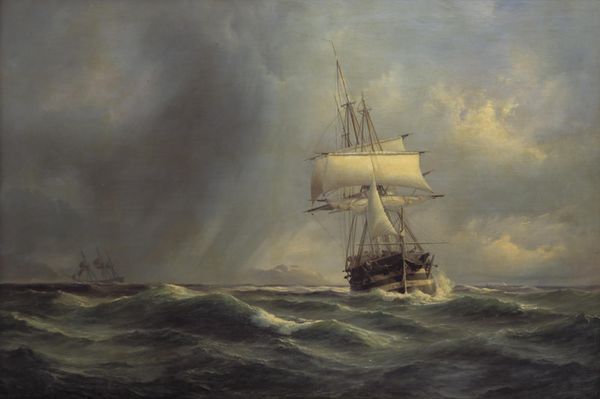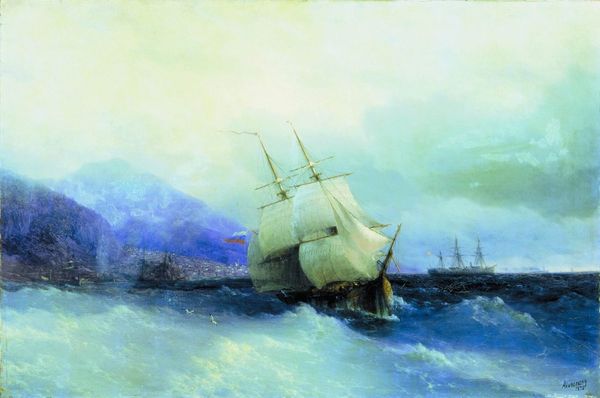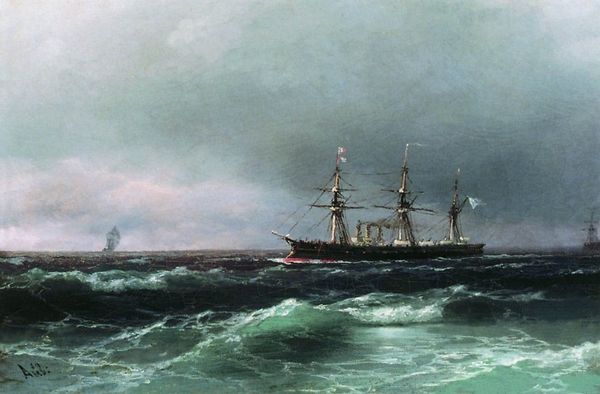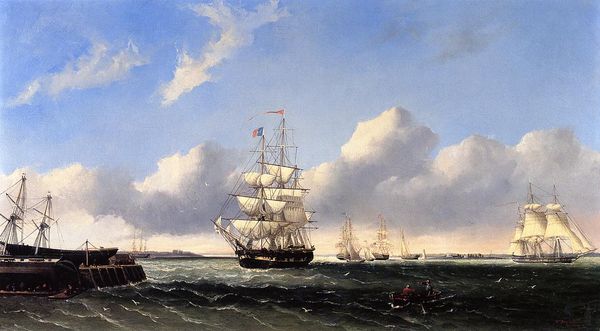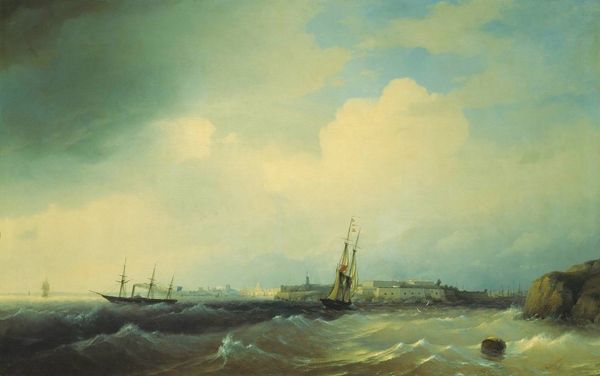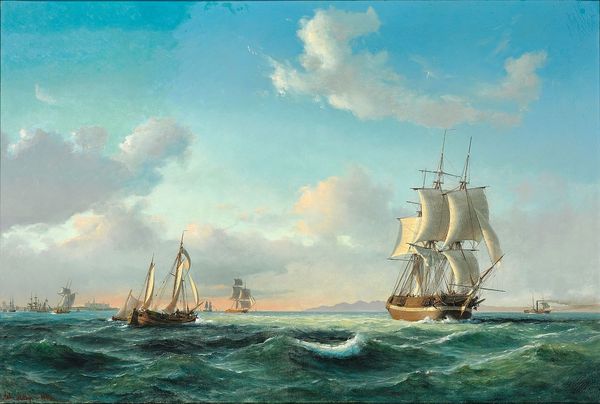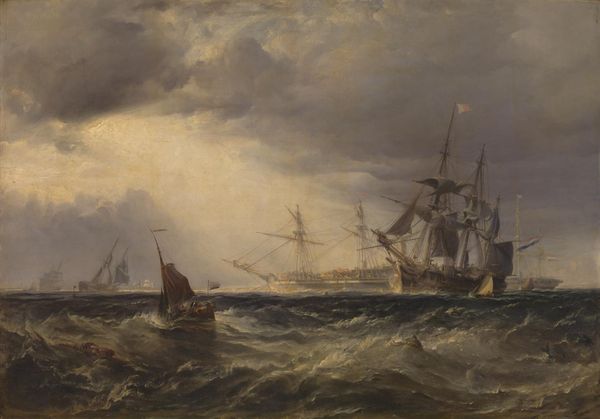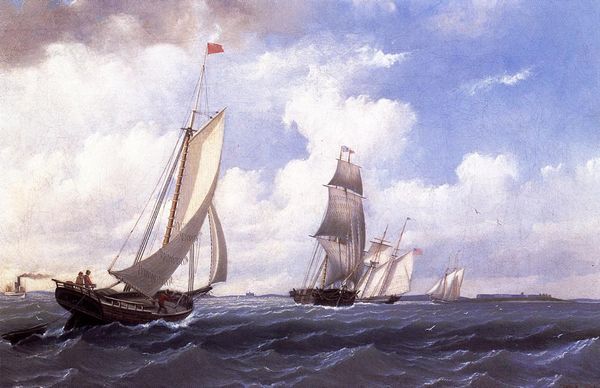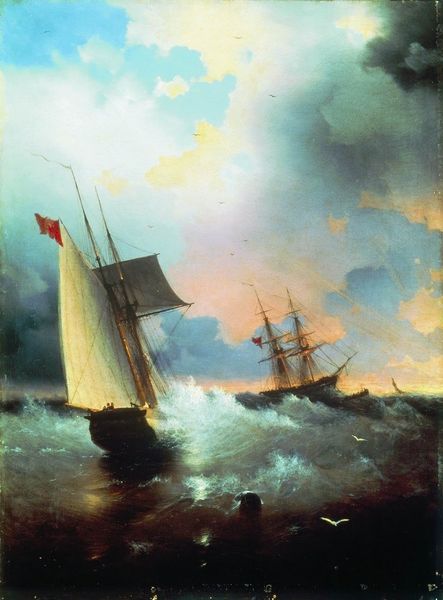
Copyright: Public domain
Editor: Here we have "The Capture of Sevastopol," painted in 1855 by Ivan Aivazovsky using oil paints. The sheer scale of it is breathtaking, and you can almost feel the chill of the sea air. What can you tell me about it? Curator: I'm struck by the labor embedded in this depiction. The artist meticulously rendered each wave, each ship—consider the immense effort to produce the pigments, weave the canvas, construct these vessels. War wasn't only waged with steel, but with the combined exertion of countless hands. Editor: That's an interesting point. It's easy to get lost in the drama of the battle and forget about the actual human labor involved. Curator: Exactly. Aivazovsky, as a court painter, crafted this heroic scene. But through a materialist lens, it prompts reflection on power dynamics. Who profits from the means of production, the building of ships, and ultimately, the waging of war? What resources were diverted? Editor: So, looking at the materials and their origins tells a much broader story than just the event itself. How does Aivazovsky's technique contribute? Curator: The shimmering surface achieved through oil paint elevates the scene but also conceals. The romanticism, almost glorifying the war, can be seen as propaganda. Examining the social context unveils that it was a period of immense state control of art production and the manufacturing sector supporting naval advancement. The art serves to bolster power. Editor: I hadn't considered the link between artistic style and political messaging so explicitly. I always focused on the technical skill first. Curator: By looking at process, materiality and the networks of labor surrounding "The Capture of Sevastopol," we gain critical insights beyond its aesthetic value. Editor: Thank you for sharing these novel ideas. It helps one delve much deeper into understanding an artwork's profound significance.
Comments
No comments
Be the first to comment and join the conversation on the ultimate creative platform.
